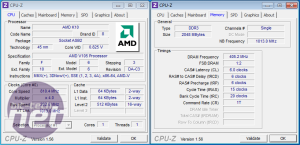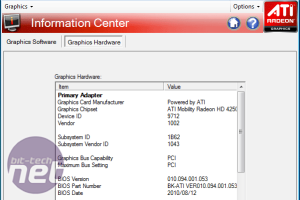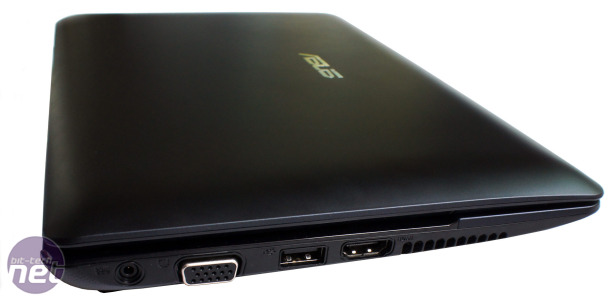A change to the netbook equation
By now you might be tired of netbooks and their samey Intel Atom hardware. They were very fashionable for a while, but what we've been missing among the huge variety of colours and slightly different specs is a netbook with a bit of graphical poke. Enter the ASUS Eee PC 1015T, that has yet another modified Athlon CPU, but more importantly Radeon HD 4200-class graphics.AMD Nile Platform
Firstly a bit about Nile. In 2009 AMD had its Congo platform, but for 2010 it's tweaked its 'third generation ultra-thin platform' to use an AMD V Series V105 CPU, which runs a single core at 1.2GHz for a 9W power draw. This is accompanied by the RS880M mobile chipset, which incorporates the Radeon HD 4250 graphics hardware.AMD V-Series V105 CPU

The AMD V105 processor won't exactly blow your socks off, in either performance or sophistication - it's made on the 45nm manufacturing process and is based on the K10.5 architecture. There's only 64KB of Level 1 cache and 512KB of Level 2, which is identical to the recent single-core Semprons. The single-channel DDR3 memory controller also runs at a sedate 800MHz too, but that's a design choice to keep the power use down as frequency costs Watts. This also goes for the HyperTransport clock too, which is limited to 1GHz, or 2MT/sec bi-directional, of bandwidth.
The advantage the V105 has over Intel's Atom is that it's got out-of-order execution, so it's more in-line with a normal desktop CPU. However, if we take a look at the Intel Atom N550, Intel has managed to squeeze two Hyper-Threaded CPU cores running at 1.5GHz, plus graphics and Northbridge into a 8.5W package, so the V105 likely won't win any performance awards for general use.
Netbook Gaming?
 The Radeon graphics is the reason we're interested in the Nile platform. The M880G chipset might be a 2010 rebrand of last year's 785G chip, but that still means the GPU is DirectX 10.1-compatible, with 40 stream processors and full UVD 2 High-Definition video acceleration. While we can't get HD on the 1,024 x 600 screen that Asus uses for its 1015T Eee PC, the HDMI output means it can hook up to a HD TV or monitor.
The Radeon graphics is the reason we're interested in the Nile platform. The M880G chipset might be a 2010 rebrand of last year's 785G chip, but that still means the GPU is DirectX 10.1-compatible, with 40 stream processors and full UVD 2 High-Definition video acceleration. While we can't get HD on the 1,024 x 600 screen that Asus uses for its 1015T Eee PC, the HDMI output means it can hook up to a HD TV or monitor.The advantage that AMD's hardware offers over Intel's is no arbitrary display limits; the HDMI hardware is standard fare, and can scale up to full HD resolutions of 1,920 x 1,200. Intel limits the output of its netbook graphics to a lesser 1,366 x 768.
Battery Life?
The Radeon HD 4250 GPU runs at 500MHz and even includes support for AMD's Stream Computing GPGPU standard, but we've been unable to track down the precise TDP of the M880G chipset it's part of. The desktop 880G chip runs at 18W, which is hefty by laptop, let alone netbook standards. Even though the M880G is stil made usingl the same TSMC 55nm process as the desktop hardware, all the associated system clocks are turned way down to save a chunk of power. Still, even with conservative estimates the Nile platform doesn't look like it'll compete with Intel netbook hardware on the battery-life front. We could therefore see Nile laptops either concede the battery life competition, or ship with larger, heavier battery units.
MSI MPG Velox 100R Chassis Review
October 14 2021 | 15:04









Want to comment? Please log in.